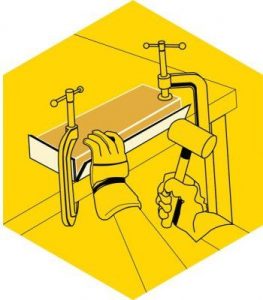EXISTENTIAL DISASTER 2
 Here is Existential Positioning (EPS) in experience. How common is it to have an intuition of mortality during childhood? It is as if each person has to realize for him/herself individually what the sages codified in Ancient philosophy as ataraxy. Ataraxy is a state of mind in which the sage, realizing that s/he has no control over external events, decides to reduce her/his own desires. This ascetic view is associated with the stance that “philosophy is learning how to die.” Paradoxically, it may seem, philosophers insist that the realization that everyone dies is liberating. Since death is inevitable, why get so excited over one’s successes and failures in life? Of course, various response to this intuition are possible, such as carpe diem (seize the day).
Here is Existential Positioning (EPS) in experience. How common is it to have an intuition of mortality during childhood? It is as if each person has to realize for him/herself individually what the sages codified in Ancient philosophy as ataraxy. Ataraxy is a state of mind in which the sage, realizing that s/he has no control over external events, decides to reduce her/his own desires. This ascetic view is associated with the stance that “philosophy is learning how to die.” Paradoxically, it may seem, philosophers insist that the realization that everyone dies is liberating. Since death is inevitable, why get so excited over one’s successes and failures in life? Of course, various response to this intuition are possible, such as carpe diem (seize the day).
The following piece is Ulmer’s pastiche of Blanchot’s epiphany. Pastiche is a useful form for mystory in which one’s own location within the discourses of the popcycle is mapped. Ulmer imitated Blanchot’s style and form, but substituted his own experience event. Exercise: compose your own primal scene as a pastiche of Blanchot’s epiphanic memory.
A primal scene? The boy is eleven, starting seventh grade. His father explains that it is time to learn the value of work. He has arranged a job for his son with a friend whose name is Cutting and who owns a sheet metal shop. Every Saturday the boy rides his bicycle across town to Cutting’s Sheet Metal. The employees are done for the week at noon on Saturday. He has to arrive by noon so the boss can lock up, leaving the boy inside (he is too young to be trusted with a key). The job is to clean the shop — sweep the floor, gather up the tools and align them neatly in their designated places on the work benches, collect the remnants and clippings of the metal sheets scattered everywhere. It takes most of the afternoon to finish the chores. The shop is a cavernous open warehouse, with rows of heavy tables, the walls lined with shelves stacked to the distant ceiling with equipment, tools, metals. It is quiet, the stillness of dust motes swirling in the beams of sunlight filtered through the few windows high up near the roof, carving vectors through deep shadow. The sunlight catches the edges of a museum of blades, a taxonomy of every snipping snap slice chop saw hack rend rip cleave nip or severing machine. Half-shaped tin objects stand in rows behind piles of hammers and modelling frames. After so many weeks and months of Saturday noons the boy begins to lose touch with his former friends and companions, who go their separate ways.
What happens then? The light and shadow of the industrial building open all at once onto a void, a black hole and white wall of divided worlds in this little infinite town: the official world of adults (parents, teachers, coaches, ministers, scout masters) that until then had constituted reality, and the unofficial world of his peers, whose existence he had only just discovered. Two completely different systems of virtue and vice, success and failure, winning and losing, visibility and invisibility, were enforced in these realms: systems Not only different, but opposite and in conflict. What earned admiration and respect in one was inversely judged in the other. He could not have articulated the revelation so abstractly then. The unexpected aspect of this scene is the sense of abandonment, solitary isolation, that overcomes the child, a spilling out or abjection, an absolute exhaling of substance, followed soon after by the inhaled relief of knowing that it doesn’t matter, since everyone and everything dies everywhere the same death.
